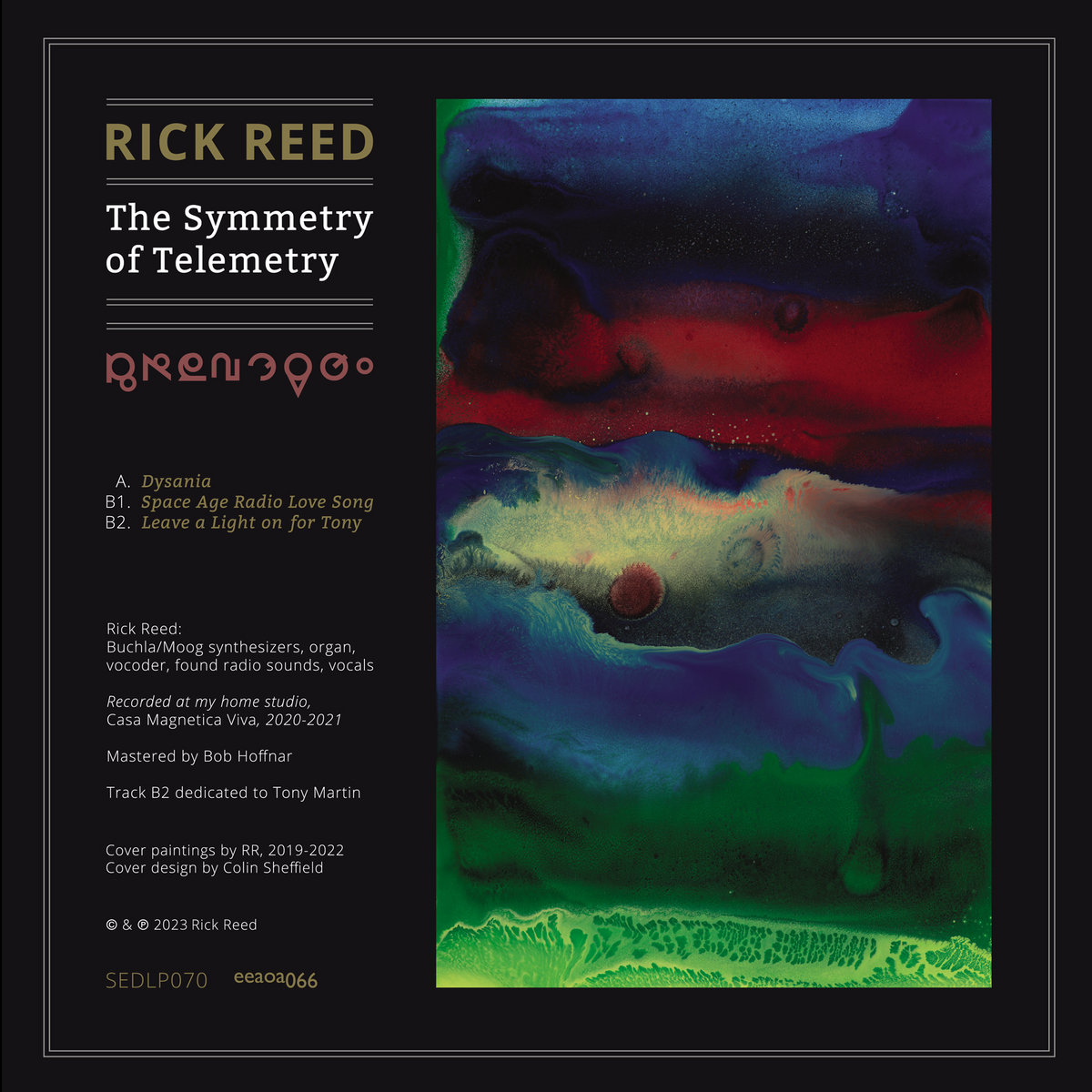 Austin's Rick Reed has been an active composer and performer of electronic music for over 30 years, but The Symmetry of Telemetry represents his first release since 2018. Using synthesizers, organs, vocoders, and found radio noises, Reed's compositional approach of developing smaller, disparate segments that are then later strung together in a collage is perfect for this material, juxtaposing different sounds and moods across the album's three lengthy compositions in a way that is dynamic, yet still coherent and cohesive as a whole.
Austin's Rick Reed has been an active composer and performer of electronic music for over 30 years, but The Symmetry of Telemetry represents his first release since 2018. Using synthesizers, organs, vocoders, and found radio noises, Reed's compositional approach of developing smaller, disparate segments that are then later strung together in a collage is perfect for this material, juxtaposing different sounds and moods across the album's three lengthy compositions in a way that is dynamic, yet still coherent and cohesive as a whole.
The 20-plus minute "Dysania" is immediately a work of weird, wet electronics. Coded transmissions beep and bleep through what sounds like synth bass and stuttering machinery. At times the more modular qualities of the synthesizers pierce through constantly evolving idiosyncratic bursts. Reed eventually steers the work into old school sci-fi soundtrack territories, but just as quickly introduced luxurious, glossy tones. The dynamic nature of the piece is what makes it most captivating, as Reed jumps from different sounds, moods, and dynamics effortlessly, while still retaining the cohesion of a composed work. Symphonic loops, humming machinery, and crunchy wobbles all appear at some point, making for an almost disorienting pace and development.
The second side opens with "Space Age Radio Love Song." Initially a menacing vastness, Reed shifts it into active, sputtering electronics. Glassy pings and open, echoing spaces alternate. Bathed in delay, the emphasis is largely on textural noises and buzzes of an indistinct nature. He also focuses a bit more on the use of found radio transmissions, as well as static between stations, ending with odd, but distinctly human voices in various states of process and distortion. The shorter "Leave a Light on for Tony" is instantly heavy, rumbling low bass before organ loops become the focus. Amidst the static crunch and sparse mix, Reed makes a bit more concession to conventional musicality, with a slightly prog quality throughout.
One of the most striking aspects of The Symmetry of Telemetry is Reed's constant metamorphosis of his audio sculptures. His approach of weaving multiple shorter excursions together into singular long-form compositions can be a precarious one, as collage can often shift into chaos, but that is never the case here. Instead, there is a clear sense of order and structure, but one in which sounds never overstay their welcome. Instead, it just makes it even more engaging on subsequent listens, since different elements were more pronounced each time I heard it.
Read More

